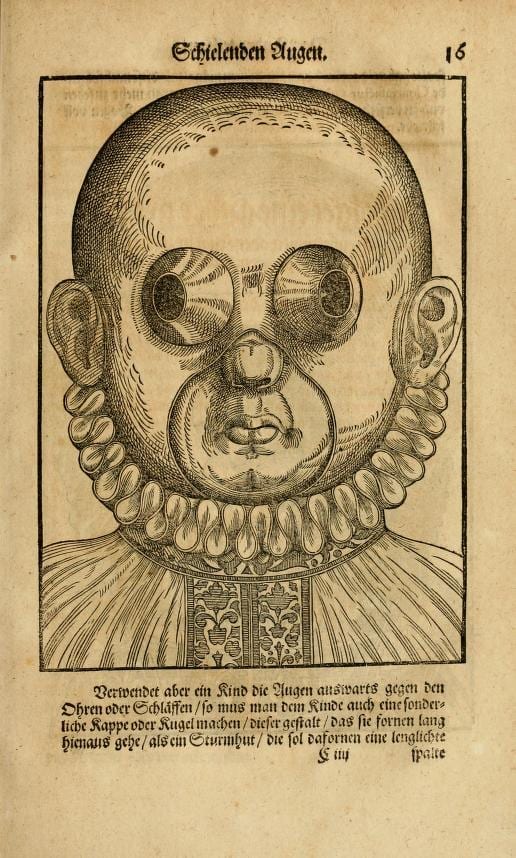Georg Bartisch (1535–1607) became an apprentice to a barber-surgeon at age thirteen, followed by two additional apprenticeships to an oculist and a lithotomist. He worked as itinerant surgeon in Germany and Bohemia, but eventually become court oculist to Duke Augustus I of Saxony in Dresden. A highly superstitious man, he believed in astronomy and witchcraft, attributing disease to the devil and to retribution for former sins. Highly skilled in ocular medicine and surgery, he was also adept in removing urinary calculi by lithotomy.
Bartisch has been regarded the father of ophthalmology. In 1583 he produced Ophthalmodouleia, Das ist Augendienst, a manuscript on ocular diseases written in German discussing the normal anatomy of the eye as well conditions such as cataracts, strabismus (squint), and trauma. It also contained an atlas of 92 woodcuts, with many diagrams and illustrations layered as flaps that could be lifted to simulate dissection. But he opposed the use of spectacles and eye glasses, thinking they did not improve vision and could actually weaken it.
 |
| Page from Ophthalmodouleia… by George Bartisch. 1583. Accessed through the Internet Archive. Credit: University of California Libraries. |

Leave a Reply